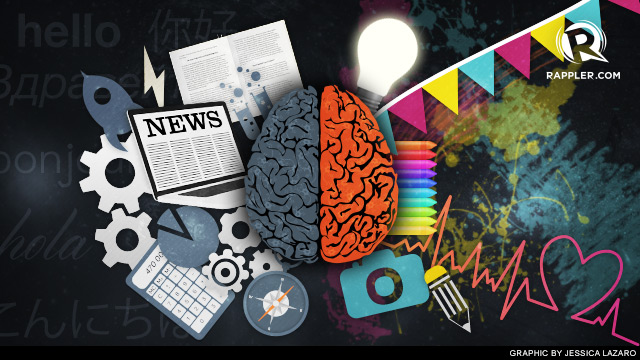SUMMARY
This is AI generated summarization, which may have errors. For context, always refer to the full article.

I have heard people too often refer to themselves as either “right-brained” or “left-brained” as if nature had a coin-toss when they were conceived and the choice just had to be one or the other.
The popular notion is that “right-brained” people are the more creative ones – in touch with their emotions and intuition – while the other, more logical analytical and therefore, “cold.” Well, lucky for us, even if most people think of themselves as relying only on one side of their brains, their left and right brains are most often doing what they do best – talking to each other.
You must ask, as I have when I first saw a picture of the brain in my life, why is it divided in two sections like in a theater with seemingly no middle seats? Scientists think that it is because nature found it more efficient to divide the brain so that it can lump up certain functions on adjacent areas, thereby minimizing errors in sending messages. I thought that was really cool – the brain figuring itself out – how to reorganize itself more efficiently.
But remember those absent middle seats? They are really there, albeit more of a bridge than a group of seats, to get the two sides to work together on information being passed back and forth between the two sides of the brain. It is called the corpus callosum. I can still remember the episode of Carl Sagan as he explained this while walking inside a giant, fabricated corpus callosum in his TV Series “Cosmos” in the 70s. I thought it was just so beautiful that nature thought of making a bridge inside my head so that neither of my two sides will be isolated.

Most people, about 90%, are right-handed, while the rest are either left-handed or ambidextrous, according to the primer on the topic written by Carl Sherman, science writer of the neuroscience organization Dana Foundation. But this does not necessarily mean that all lefties are “right-brainers” in everything.
The degree of how much we rely on which side of the brain more varies from one individual to another. It is not a hard and fast rule that if you are right-handed, you are always left-brained in everything; and that if you are a leftie, you deal everything with your right-brain.
The reality is that there are functions that are dominated by either sides of the brain but the complete story almost always still involves both sides of the brain. Sherman says that while the main parts of the brain for language processing are located on the left, for 30% of lefties, their dominant sphere for language is located on the right.
For skilled musicians who are often our representatives for “creativity,” it is known that they use more of their left brain, popularly perceived to be “cold,” and that it is the left brain that plays a key role in the “emotional aspect” of music. No shabby work at all for the “icy” left hemisphere. In other words, you may be “left-brained” in driving but “right-brained” in language.
Sherman says that brain scans have suggested that the “aha” or moment of insight usually shows up as a corresponding activity on the right hemisphere. However, we don’t have to be neuroscientists to know that you cannot get an insight if you have not been working on the subject of your Eureka long before that. That is also what Sherman says in his brief. A major part of that “work” happens in the left hemisphere. Giving sole credit to the right brain for creative insight is like thanking the gift-wrapping counter of a store for the amazing gift you got.
You have two brains: the left and the right. We are so given to thinking in terms of simple divisions – administration/opposition, good/evil, right/wrong that we even make our own brain hemispheres fight for sole credit for who we are. While many would tell you to simplify, to think of your mind as only one side or the other is extremely impoverished, you don’t have to scrimp. Nature gave you about 100 billion neurons kept in your mental purse. Use them. There are no refunds for non-usage. – Rappler.com
Maria Isabel Garcia is a science writer. She has written two books, “Science Solitaire” and “Twenty One Grams of Spirit and Seven Ounces of Desire.” Her column appears every Friday and you can reach her at sciencesolitaire@gmail.com
Add a comment
How does this make you feel?
There are no comments yet. Add your comment to start the conversation.